Samsung UE46ES8000 Review
Samsung UE46ES8000
A stunning design with a tip-top performance and class-leading online system? That’ll be another Samsung flagship TV, then.
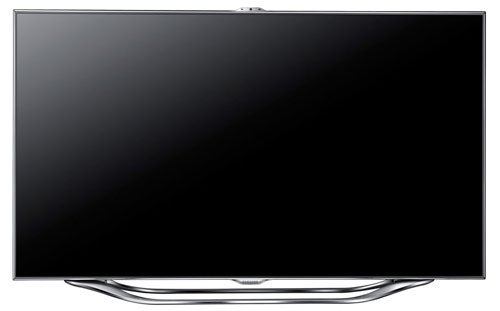
Verdict
Pros
- Eye-popping design
- Exceptional feature count
- Excellent 3D and 2D performance
Cons
- The gesture control system could be better
- Occasional backlight bleed, especially with 3D
- Picture presets are poor
Key Specifications
- Review Price: £1487.92
- 46in LCD TV with edge LED lighting
- Active 3D playback
- New Smart TV platform
- Built-in camera and Wi-Fi
- Voice and gesture control systems
There’s a huge amount of good news to report about the Samsung UE46ES8000. It’s a fantastic-looking 46in LCD TV with great picture quality and oodles of features. But we’re going to start off this review with a moan, for it’s yet another Samsung TV that sells itself short out of the box with its crazy default picture presets.
None of the four main picture presets provided get even close to delivering a really satisfying all-round picture – or rather, a picture that actually shows Samsung’s LCD panels off to their best advantage. Even the Movie preset on the Samsung UE46ES8000 uses backlight and contrast settings that are far too high. And as always, driving these two key picture components too aggressively reduces black level response, increases incidences of backlight inconsistency, makes colours look over-aggressive, and exaggerates source picture noise.
Presumably, Samsung favours its aggressive presets because it wants to make its pictures look vivid, bright and bold. But while this might show off one dimension of the brand’s LCD panel talents, it sells them seriously short in other ways. Certainly if you’re a movie fan like we are, basing picture settings around such aggressive presets means the whole picture tone is built on a fundamentally flawed foundation.
This all looks even more inexplicable given that the Samsung UE46ES8000 has separate Shop (for displaying in high street retailers) and Home modes. Hmm. Not for the first time it occurs to us that it might benefit Samsung to follow the lead of its Korean rival, LG, and seek the endorsement of the Imaging Science Foundation (ISF) so that it’s better equipped to cater for the tastes of hardcore AV enthusiasts.
It might seem like we’re labouring the point a bit here, but it’s a simple fact that the vast majority of people who buy a TV never look beyond its picture presets. Which means that arguably most people who buy a Samsung TV don’t ever get the best out of it. And that can’t be good for either consumers or Samsung.
The good news, thankfully, is that provided you’re not afraid to make some actually very straightforward adjustments to the picture settings yourself, you can transform the Samsung’s performance in an instant. Seriously, all you have to do is reduce the backlight to somewhere between its 6 and 8 setting, and get the contrast down to somewhere around 70-75 percent, and suddenly you can truly see the goodies the panel is capable of delivering.
While working out these settings it did occur to us that it would be nice if Samsung provided more backlight options than the 20 steps currently on offer, to allow you for more subtle adjustments. But even using the values described above you suddenly find that the picture enjoys much deeper, richer black colours with minimal shadow detail crushing; suffers only marginally with backlight consistency problems; and enjoys a more subtle, expressive colour range.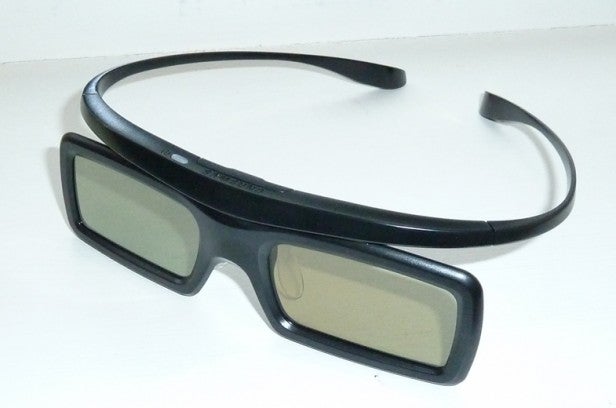
In short pictures go from being intense-but-flawed to subtle, believable and far more immersive/less distracting. This means, too, that you’re better able to appreciate all the other things the UE46ES8000 gets right in picture terms.
For instance, the TV sports a clearly much improved dynamic contrast system, over last year’s Samsung models, due, we presume, to the TV’s introduction of dual-core processing. This enables the TV to study twice as many segments of the picture as last year’s equivalent models. This more localised picture assessment means that the TV’s impressive black levels depths can be accompanied within the same frame by bolder, brighter light elements than you got with last year’s panels.
We’ve seen suggestions that the Samsung ES8000’s contrast performance is actually worse than that of the D8000 series, but this doesn’t ring true to us. For while just sticking a contrast measurement device on the screen might deliver a reduced result, the much more accurate application of the TV’s dynamic contrast controls means that in truth, the minute by minute contrast performance of the screen strikes your eye as being much better than last year’s models. A fact that’s easily confirmed by looking at the UE46ES8000 side by side with a D8000.
It’s also much easier to appreciate the quality of colour reproduction from the Samsung UE46ES8000 once you’ve adjusted it from its presets to more subdued picture settings. For while bright scenes might not look quite so punchy and dramatic as they do using the presets, you can pick out more readily subtle shifts in colour tone, which helps pictures look more realistic and less flat and cartoony.
HD pictures still look extremely detailed and sharp with the toned down settings too. The only difference is that textures and crisp edges look natural rather than forced and over-pushed. Just make sure, though, that the TV’s noise reduction routines are turned off for HD viewing, for these are more likely to cause softness and even image lag than do anything positive for HD pictures.
Another processing feature that needs to be treated with care is the Motion Plus system. Designed to reduce judder and blur, it comes with various ‘strength’ settings, of which only the least powerful Clear mode really works for us. The others tend to leave the picture looking rather processed and unnatural – though kudos to Samsung for allowing you to manually adjust the strength of the processing’s individual judder and blur components.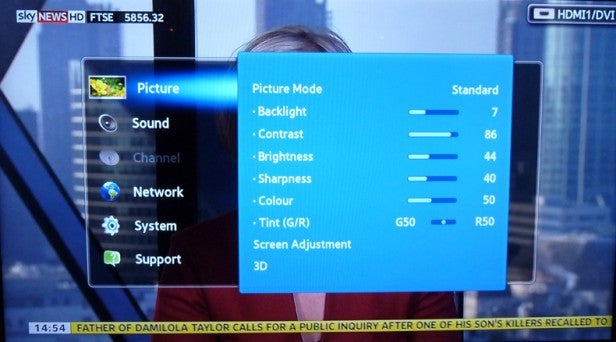
Mind you, once the TV has warmed up for a few moments it’s actually pretty free of motion blur and judder anyway.
The UD46ES8000 impresses, too, with its standard definition upscaling. The powerful, high-speed processing made possible by the set’s dual-core engine help it do a really sterling job of making standard definition images look sharp and detailed. Yet crucially this is achieved at the same time that source noise is identified and removed with at times uncanny accuracy.
The last picture element to cover is, of course, 3D. And here again for the most part the UE46ES8000 is a startling success. For starters, 3D pictures look exceptionally bright and colourful despite the active shuttering effect of the single pair of glasses you get free with the TV. In fact, they’re for our money the brightest and most richly saturated active 3D pictures we’ve yet seen from any TV.
Even better, they’re also almost completely free of the dreaded crosstalk noise. We tried out all of our favourite crosstalk-inducing 3D scenes, and the UE46ES8000 survived them all almost completely intact. This – along with some surprisingly effective motion processing you can use in 3D mode – leaves you free to enjoy all the detail and sharpness that defines Full HD active shutter technology, and makes 3D viewing much less tiring than it is on screens which suffer badly with crosstalk. 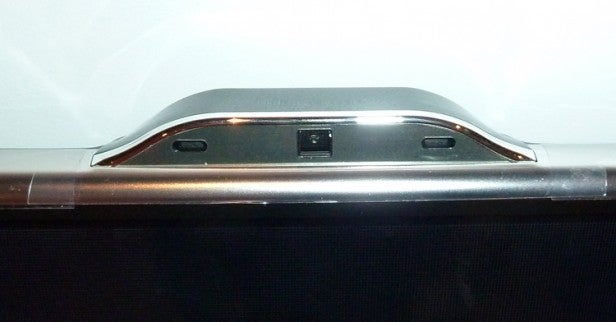
Actually, so impressive is the UE46D8000’s crosstalk performance that we’d go so far as to say it delivers our favourite active 3D picture performance to date, outgunning even Panasonic’s 2011 3D plasmas on account of the Samsung’s extra brightness and ability to resolve detail and colours in dark 3D areas.
It’s worth adding that we’ve heard reports of some people suffering with crosstalk on the UE46ES8000. But try as we might, we just couldn’t replicate this for ourselves. In fact, our only bugbear with 3D viewing is that you can sometimes see a little backlight inconsistency, on account of the panel having to be driven harder to compensate for the active 3D dimming effect.
At this point we realise that we’ve done this Samsung UE46ES8000 review back to front, focusing on picture quality ahead of features. But it seemed daft to interrupt the flow of things after starting out discussing the picture presets.
In any case, we’ve covered the features of the Samsung UE46ES8000 already in some depth within our review of the Samsung UE55ES8000, along with our exploration of the new voice, touchpad remote and gesture control systems the Korean brand has introduced for its top-tier 2012 TVs.
So keeping things brief here, the UE46ES8000’s four big feature leaps for 2012 go like this: a dual-core processor for enhanced picture processing and enhanced Smart TV functionality; a higher-resolution Smart TV interface; new Smart TV content including Netflix and a trio of new ‘zones’ based around fitness, kid’s entertainment and a closed family/friend photo and message sharing network; and a new Smart Control system that combines gesture and voice controls with both a normal remote and an included alternative remote equipped with a touchpad for web-friendly cursor control.
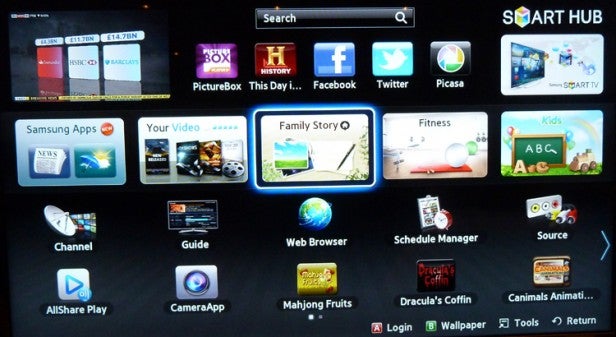
During our assessment of the UE55ES8000 and the separate feature on the new control system, we concluded that while we broadly loved the voice controls and touchpad remote, we didn’t get on with the gesture controls at all. However, having revisited Samsung’s control suite on the UE46ES8000, it’s become clear that the brand has improved the gesture control system from the UE55ES8000 we tested. The system responds more quickly and accurately to hand gestures, and crucially it’s now much better at distinguishing between hand and head movements, so that it never triggered accidentally even once during our tests.
It also occurred to us for the first time that the gesture control system could come in very handy should you be unable to find your remote control, or you can’t be bothered to go and get it from the other side of the room. For in essence, the gesture control system allows you to control the TV without needing a physical remote at all – a genuinely revolutionary step that we can imagine proving at least occasionally very useful in normal life (rather than test lab) conditions.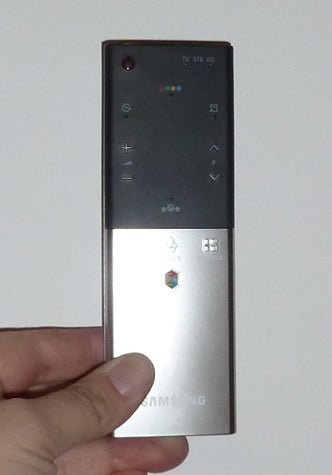
Problems remain with the gesture control system. It’s still fiddly to move your hand accurately enough to get in position to select small text links on Web pages. And more guidance while setting the feature up would be greatly appreciated. But the latest iteration of the gesture control system is certainly an improvement, and as such is now something that can be genuinely handy (pun intended) on occasion.
Verdict
The Samsung UE46ES8000 is at heart a quite brilliant TV. It does its best to hide its potential behind some unhelpful – to say the least – picture presets, but provided you spend just a couple of minutes to work round those, it’s capable of giving you some stellar pictures in both 2D and 3D mode.
It also sets new standards with both its Smart Control systems and its latest Smart TV online system, and happens to be one of the most attractive TVs ever too. In short, once you’ve learned to work round its little idiosyncracies, it’s a TV that’s extremely easy to fall in love with.
How we test televisions
We test every TV we review thoroughly over an extended period of time. We use industry standard tests to compare features properly. We’ll always tell you what we find. We never, ever, accept money to review a product.
Trusted Score
Score in detail
-
Features 10
-
3D Quality 9
-
Value 8
-
Design 10
-
2D Quality 9
-
Sound Quality 7
Features
| Size (Inch) | 46in |
| Display Type | LED |
| Max. Resolution | 1920 x 1080 |
| Full HD 1080p | Yes |
| Digital Tuner | Yes |
| Freeview HD | Yes |
| Freesat HD | No |
| 3D Ready | Yes |
| Refresh Rate (Hertz) | '800'Hz |
Connectivity
| HDMI | 4 (v1.4) |
| Component | 1 |
| Composite | 1 |
| Scart | 1 (via supplied adaptor) |
| Digital Audio Out | Yes (optical) |
| Headphone | 1 |
| Charging/Computer Connection | 3 |
| Ethernet | Yes |
| WiFi | Yes (built-in) |
Physical Specifications
| Height (Millimeter) | 614.7mm |
| Width (Millimeter) | 1038.7mm |
| Depth (Millimeter) | 30.8mm |
| Weight (Gram) | 12g |

